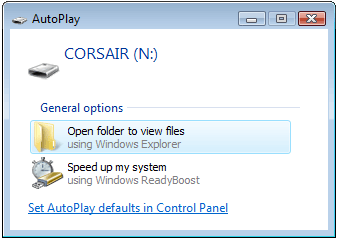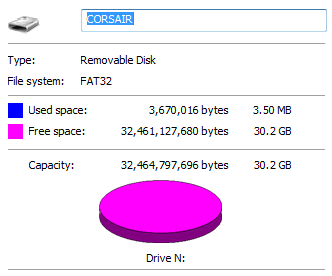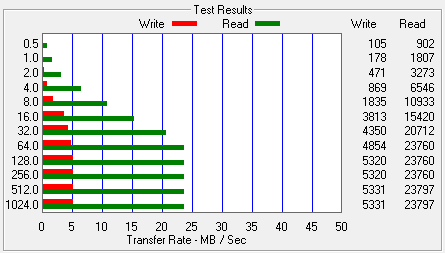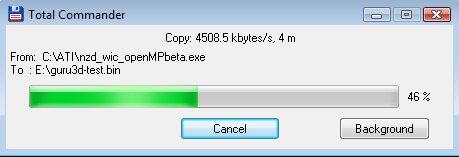4 - Testing the flash-drive
Testing the flash-drive
Now I've been thinking, people have laundered, baked, frozen, boiled, dropped, and even ran over these flash-disk with a SUV. You know what, let me be the first to remain original and actually test the performance of the drive rather than torturing it in situations that will never happen.
 Oops ..I dropped my USB stick in this pan of hot boiling water ... I mean come on. Or, hey I was driving a bus, dropped the USB stick and accidentally drove over it. No way.
Oops ..I dropped my USB stick in this pan of hot boiling water ... I mean come on. Or, hey I was driving a bus, dropped the USB stick and accidentally drove over it. No way.
At best you'll drop it every once in a while, so we threw it down the stairs twice .. it's still in mint condition.
Let me just talk you through the process of installation and actual usage.
So when we insert the drive into our PC the plug & "pray" sequence picks up quick on the device, it comes back as a Corsair drive; nicely 32 GB in size. The drive is pre-formatted for you and included a PDF manual and EAS 256 bit-encryption software.
It installs itself fine, and Windows Vista will run a quick test on read/write speeds. It was accepted as ReadyBoost cache memory.
What is ReadyBoost ? Vista's SuperFetch function will retrieve prefetched data from the virtual memory page file and move it to physical memory as soon as possible to ensure the continuity of the performance enhancement. In spite of this, because the page file exists on the hard disk (which is less responsive than physical memory) SuperFetch is still going to be hindered by the time that it takes the hard disk to respond to its retrieval operation. Microsoft figured to beat this probable performance degradation in SuperFetch's retrieval operation, the ReadyBoost feature will monitor prefetched data that that is to be sent to virtual memory and instead direct it to a more responsive memory device, this can be a USB drive, SD Card, Compact Flash, or other flash memory device that is connected to your computer. In this case, the USB Flash Disk.
When we hit the drive properties we notice that it's formatted in FAT32. This is an older file-system originating from the Windows XP era.
While faster than today's NTSF file system, it has a disadvantage. The maximum file size for a FAT32 drive is 4GB. So you might want to re-format the drive if you plan to transfer huge files 4GB+ files.

Guys, meet ATTO. ATTO is a really handy benchmark to test the performance of flash drives. We configured this program to transfer of data to the flash drive in blocks from 0.5 KB to 1MB.

Right, let's check out the actual read and write speeds. Here's where the product starts to show skills, if we transfer block files sized bigger than 64KB you'll reach 5 MB/sec write speeds which is on par with our real-world testing, unfortunately on the slow side.
When you transfer files bigger than 64KB from the drive you can expect read speeds of more than 23 MB/s which is quite okay. Now what if you plan to use this drive as ReadyBoost cache ?
Readyboost is still not quite understood by many. The known requirements are as follows: You will need at least a 64MB Hi-Speed USB flash drive (which goes without saying) that exceeds 3.5MB/s for 4KB random reads and 2.5MB/s for 512KB random writes uniformly across the device. What Microsoft won't tell you, is that you need under 1 ms response delay.
The 32GB Voyager meets that requirement just fine.
Real Word testing
A more usual test is to simply copy a file from a fast Raptor HDD towards the flash-disk and simply observe how fast it writes.

The write (copying to the flash disk) speed of the drive regrettably to say is average. We measure roughly 4.5 MB per second write speeds based on a FAT32 formatted stick. This is a pretty big drive so chances are you will transfer either a lot or big files as well.

Reading however is much faster. We now copy the 1.7 GB file back towards the HDD and notice pretty adequate speeds of 23 MB/sec. This is real-work usage, nothing synthetic about it. We tested on high-end gear by the way. A test system based on nForce 680i - Core 2 Extreme 6800 - 2GB DDR2 1142 MHz - USB 2.0 - Windows Vista Business Edition. I also check the read/write speeds on an Intel based platform, the results are 100% similar.
So the culprit definitely is writing.
